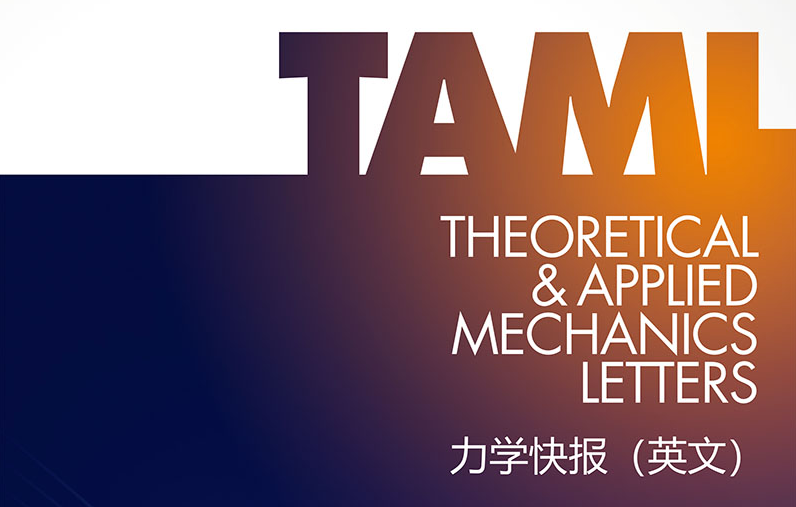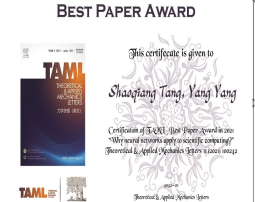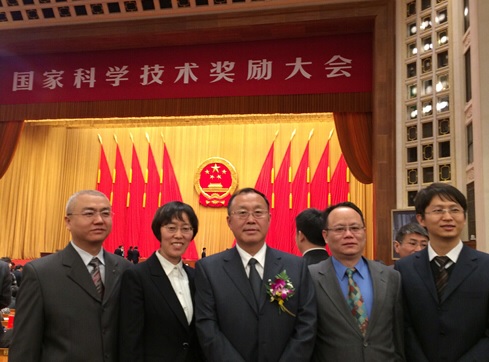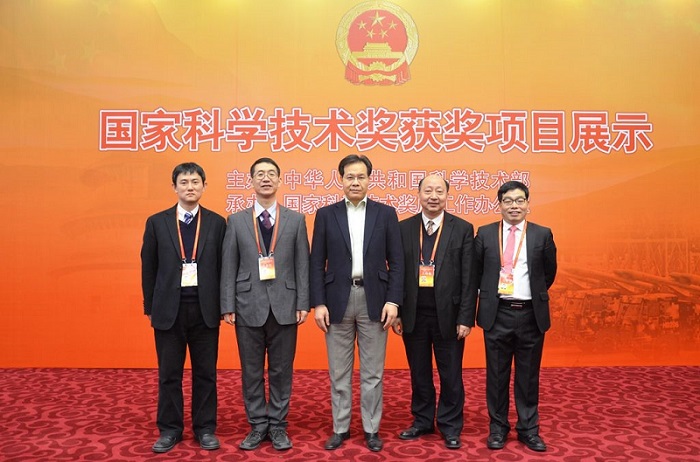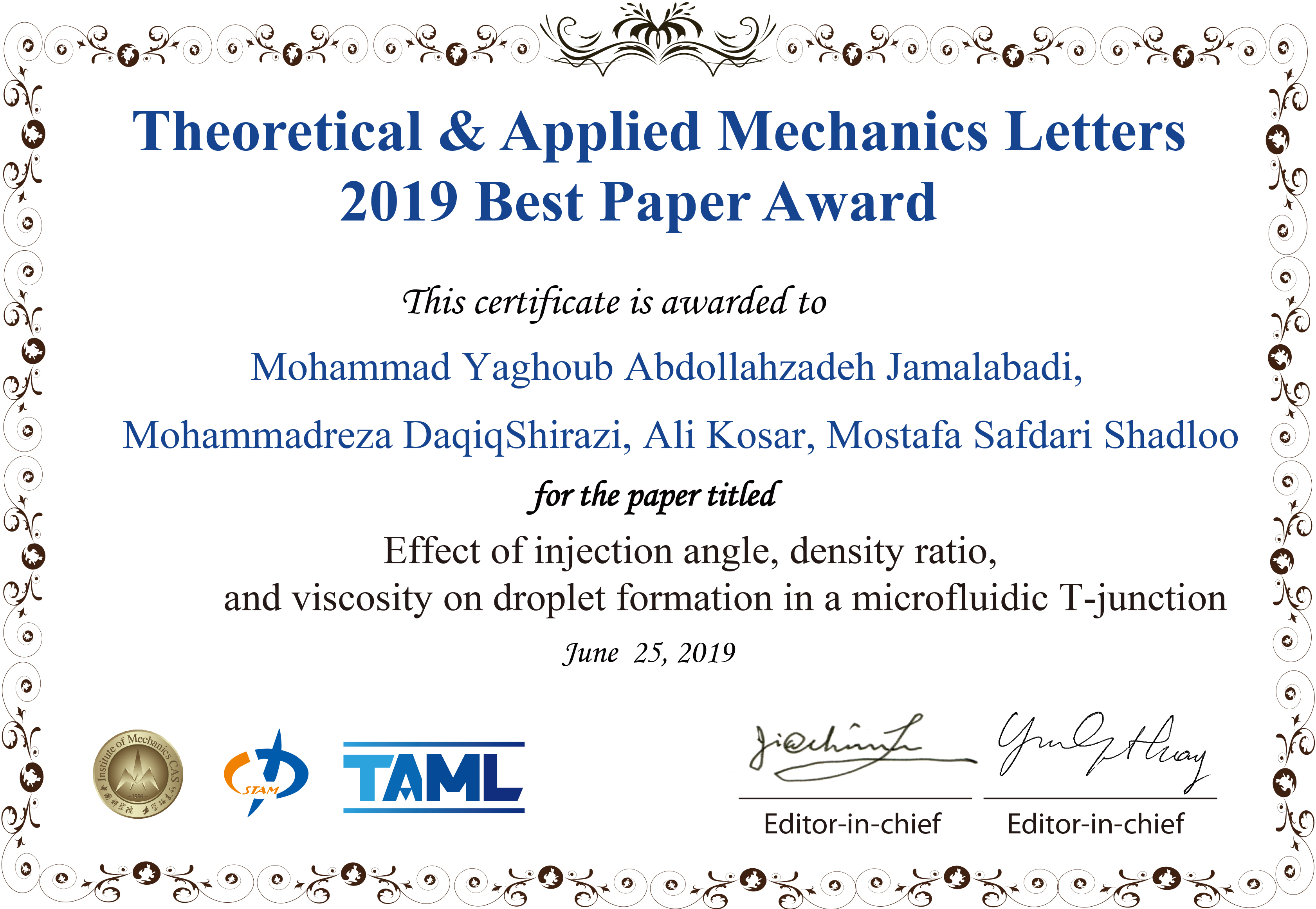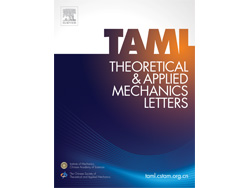Institute of Mechanics,
Chinese Academy of Sciences
2022 Vol.12(6)
Display Mode: |
Theoretical and Applied Mechanics Letters 12 (2022) 100363.
doi: 10.1016/j.taml.2022.100363
Abstract:
Engineering structures often are subjected to a variety of load types.Some parts of them may experience a complex deformation history,for example,plastic deformation under cyclic loading.The materials of such structures often include nonlinearity and path (history) dependence.Appropriate nonlinear constitutive models considering loading path (history) can assist in structural design,help monitor structural health and assess the redundancy life of the engineering structures.Many constitutive models have been proposed to describe the behavior of elastoplastic materials[1-4]based on an explicit-functions-based paradigm with basic elements such as the plastic flow,loading and unloading judgment etc..However,the formulation of function-based constitutive model along with the traditional approach is a challenging and time-consuming job.It requires complex mathematical derivation and intuition into the plastic deformation mechanisms of the materials.In recent years,with the development of the data-driven approach and the machine learning by the deep neural networks[5,6],building the constitutive models through the combination of data science and solid mechanics attracted the research attention of the researchers around the world.
Engineering structures often are subjected to a variety of load types.Some parts of them may experience a complex deformation history,for example,plastic deformation under cyclic loading.The materials of such structures often include nonlinearity and path (history) dependence.Appropriate nonlinear constitutive models considering loading path (history) can assist in structural design,help monitor structural health and assess the redundancy life of the engineering structures.Many constitutive models have been proposed to describe the behavior of elastoplastic materials[1-4]based on an explicit-functions-based paradigm with basic elements such as the plastic flow,loading and unloading judgment etc..However,the formulation of function-based constitutive model along with the traditional approach is a challenging and time-consuming job.It requires complex mathematical derivation and intuition into the plastic deformation mechanisms of the materials.In recent years,with the development of the data-driven approach and the machine learning by the deep neural networks[5,6],building the constitutive models through the combination of data science and solid mechanics attracted the research attention of the researchers around the world.
Theoretical and Applied Mechanics Letters 12 (2022) 100369.
doi: 10.1016/j.taml.2022.100369
Abstract:
This paper examines the influence of physical parameters on the collapse dynamics of a spherical bubble filled with diatomic gas (κ = 7/5). The problem is formulated by the Rayleigh-Plesset dynamical equation, whose numerical solutions are carried out by Maple. Our studies show that each physical parameter affects the bubble collapse dynamics in different degree, which reveals that bubble collapse dynamics must considers all the parameters including liquid viscosity, surface tension, etc, else the outcome cannot be trusted.
This paper examines the influence of physical parameters on the collapse dynamics of a spherical bubble filled with diatomic gas (κ = 7/5). The problem is formulated by the Rayleigh-Plesset dynamical equation, whose numerical solutions are carried out by Maple. Our studies show that each physical parameter affects the bubble collapse dynamics in different degree, which reveals that bubble collapse dynamics must considers all the parameters including liquid viscosity, surface tension, etc, else the outcome cannot be trusted.
Theoretical and Applied Mechanics Letters 12 (2022) 100378.
doi: 10.1016/j.taml.2022.100378
Abstract:
A streamlined shape of the best swimmers removes the boundary-layer separation and ensures a laminar flow pattern. The fastest fish have a very sharp convex nose (rostrum), the purpose of which remains unclear. The bodies of revolution similar to their shapes are analyzed in steady underwater and floating motion. The sources and sinks were located on the axis of symmetry and above the water surface to estimate the pressure on the body and the vertical velocities on the water surface. It was shown that the flow patterns on a special shaped body with concave nose has no stagnation points and ensure small values of the water surface elevation. These fact allow diminishing the maximum pressure on the surface and wave drag. Special shapes with the sharp concave nose and negative pressure gradients on their surface could be parts of the low drag underwater and floating hulls.
A streamlined shape of the best swimmers removes the boundary-layer separation and ensures a laminar flow pattern. The fastest fish have a very sharp convex nose (rostrum), the purpose of which remains unclear. The bodies of revolution similar to their shapes are analyzed in steady underwater and floating motion. The sources and sinks were located on the axis of symmetry and above the water surface to estimate the pressure on the body and the vertical velocities on the water surface. It was shown that the flow patterns on a special shaped body with concave nose has no stagnation points and ensure small values of the water surface elevation. These fact allow diminishing the maximum pressure on the surface and wave drag. Special shapes with the sharp concave nose and negative pressure gradients on their surface could be parts of the low drag underwater and floating hulls.
Theoretical and Applied Mechanics Letters 12 (2022) 100380.
doi: 10.1016/j.taml.2022.100380
Abstract:
The quantitative characterization of the full-field stress and displacement is significant for analyzing the failure and instability of engineering materials. Various optical measurement techniques such as photoelasticity, moiré and digital image correlation methods have been developed to achieve this goal. However, these methods are difficult to incorporate to determine the stress and displacement fields simultaneously because the tested models must contain particles and grating for displacement measurement; however, these elements will disturb the light passing through the tested models using photoelasticity. In this study, by combining photoelasticity and the sampling moiré method, we developed a method to determine the stress and displacement fields simultaneously in a three-dimensional (3D)-printed photoelastic model with orthogonal grating. Then, the full-field stress was determined by analyzing 10 photoelastic patterns, and the displacement fields were calculated using the sampling moiré method. The results indicate that the developed method can simultaneously determine the stress and displacement fields.
The quantitative characterization of the full-field stress and displacement is significant for analyzing the failure and instability of engineering materials. Various optical measurement techniques such as photoelasticity, moiré and digital image correlation methods have been developed to achieve this goal. However, these methods are difficult to incorporate to determine the stress and displacement fields simultaneously because the tested models must contain particles and grating for displacement measurement; however, these elements will disturb the light passing through the tested models using photoelasticity. In this study, by combining photoelasticity and the sampling moiré method, we developed a method to determine the stress and displacement fields simultaneously in a three-dimensional (3D)-printed photoelastic model with orthogonal grating. Then, the full-field stress was determined by analyzing 10 photoelastic patterns, and the displacement fields were calculated using the sampling moiré method. The results indicate that the developed method can simultaneously determine the stress and displacement fields.
Theoretical and Applied Mechanics Letters 12 (2022) 100383.
doi: 10.1016/j.taml.2022.100383
Abstract:
The present study is focused on the constitutive modeling for the mechanical behavior of rubber reinforced with filler particles. A filler-dependent energy density function is proposed with all the continuum mechanics-based necessities of an effective hyperelastic material model. The proposed invariant-based energy function comprises a single set of material parameters for a material subjected to several modes of loading conditions. The model solution agrees well with existing experimental results. Later, the effect of varying concentrations of filler particles in the rubber matrix is also studied.
The present study is focused on the constitutive modeling for the mechanical behavior of rubber reinforced with filler particles. A filler-dependent energy density function is proposed with all the continuum mechanics-based necessities of an effective hyperelastic material model. The proposed invariant-based energy function comprises a single set of material parameters for a material subjected to several modes of loading conditions. The model solution agrees well with existing experimental results. Later, the effect of varying concentrations of filler particles in the rubber matrix is also studied.
Theoretical and Applied Mechanics Letters 12 (2022) 100384.
doi: 10.1016/j.taml.2022.100384
Abstract:
Prediction of Lotka-Volterra equations has always been a complex problem due to their dynamic properties. In this paper, we present an algorithm for predicting the Lotka-Volterra equation and investigate the prediction for both the original system and the system driven by noise. This demonstrates that deep learning can be applied in dynamics of population. This is the first study that uses deep learning algorithms to predict Lotka-Volterra equations. Several numerical examples are presented to illustrate the performances of the proposed algorithm, including Predator nonlinear breeding and prey competition systems, one prey and two predator competition systems, and their respective systems. All the results suggest that the proposed algorithm is feasible and effective for predicting Lotka-Volterra equations. Furthermore, the influence of the optimizer on the algorithm is discussed in detail. These results indicate that the performance of the machine learning technique can be improved by constructing the neural networks appropriately.
Prediction of Lotka-Volterra equations has always been a complex problem due to their dynamic properties. In this paper, we present an algorithm for predicting the Lotka-Volterra equation and investigate the prediction for both the original system and the system driven by noise. This demonstrates that deep learning can be applied in dynamics of population. This is the first study that uses deep learning algorithms to predict Lotka-Volterra equations. Several numerical examples are presented to illustrate the performances of the proposed algorithm, including Predator nonlinear breeding and prey competition systems, one prey and two predator competition systems, and their respective systems. All the results suggest that the proposed algorithm is feasible and effective for predicting Lotka-Volterra equations. Furthermore, the influence of the optimizer on the algorithm is discussed in detail. These results indicate that the performance of the machine learning technique can be improved by constructing the neural networks appropriately.
Theoretical and Applied Mechanics Letters 12 (2022) 100388.
doi: 10.1016/j.taml.2022.100388
Abstract:
Theoretical and Applied Mechanics Letters 12 (2022) 100389.
doi: 10.1016/j.taml.2022.100389
Abstract:
Theoretical and Applied Mechanics Letters 12 (2022) 100392.
doi: 10.1016/j.taml.2022.100392
Abstract:
Theoretical and Applied Mechanics Letters 12 (2022) 100398.
doi: 10.1016/j.taml.2022.100398
Abstract:
 Submit a Paper
Submit a Paper
 Subscription
Subscription
News
MORE+
Call for Papers
MORE+
- Crossing-Mechanics Driven by Big Data
- Machine learning in the fluid mechanics research of wind energy
- Mechanics of Origami/Kirigami structures and metamaterials
- New insights and perspectives on impact biomechanics for human tissues: from injury prevention, protection to protective equipment
- Environmental Mechanics for Extreme Natural Events





